#paris shirtmaker
Text

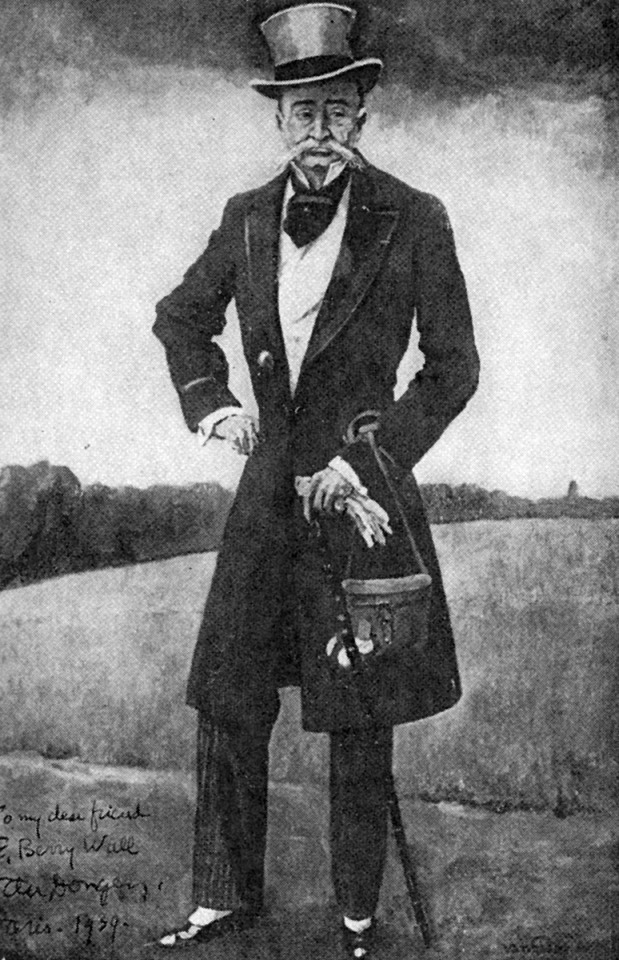
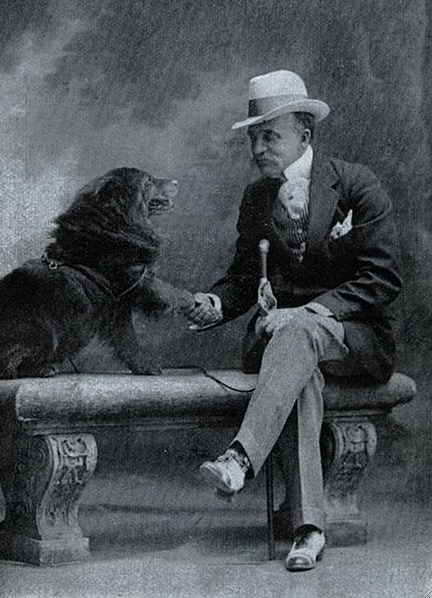


Evander Berry Wall was a famous sociality and fashionista in the late 19th and early 20th century, dubbed The King of the Dudes. Via wikipedia:
"Wall was a clotheshorse. He generally wore a "very extraordinary costume" such as the one pictured on the right: "a dust coat of a reddish havana brown, a suit made of a large grey shepherd plaid check; extremely wide trousers tapered at the ankle, and turned up several inches to display white spats and highly varnished shoes; a 'startling' striped shirt in red and sky blue, with very high false collar of a pattern different from the shirts, a striped vest and a widely spread stock-cravat." He was popularly credited with the possession of over 500 trousers and 5,000 neckties."
...
Wall was first proclaimed "King of the Dudes" at the resort town of Long Branch, New Jersey in the summer of 1883.
Wall was again proclaimed "King of the Dudes" in 1888 by the New York American newspaper. A journalist named Blakely Hall judged that Wall had won the "Battle of the Dudes" against Robert "Bob" Hilliard, another sartorial dude when, during the March Blizzard of 1888, he strode into a bar clad in gleaming boots of patent leather that went to his hips. Nevertheless, some historians still consider it was Hilliard who won that dude battle.
Wall won another fashion contest in August 1888, in Saratoga Springs, New York. To win a bet against John "Bet a Million" Gates, Wall changed clothes 40 times between breakfast and dinner. He appeared on the race track "in one flashy ensemble after the other until, exhausted but victorious he at last entered the ballroom of the United States Hotel in faultless evening attire."
Ever the fashion-leader, Wall is credited for having been the first person in the United States to wear a dinner jacket (tuxedo) to a ball. The white ensemble had been sent to him by the London Savile Row tailor Henry Poole & Co "to be worn for a quiet dinner at home or at an evening's entertainment at a summer resort." This was a time when tailcoat was still the rule, and Wall was immediately ordered off the floor.
Wall's financial life was not as successful as his fashion life. An ill-conceived stock-broking career and additional failures as a stable owner ended in an 1899 bankruptcy. Wall finally declared that "New York had become fit only for businessmen" and left for Paris in 1912.
...
They lived in a suite in the Hotel Meurice, with a consecutive string of chow dogs named Chi-Chi or Toi-Toi. This was located conveniently near the bespoke shirtmaker Charvet, where Wall had his signature "spread eagle" collar shirts and cravats custom-made for himself and his dog. Wall always dined at the Ritz with his dog, whose collars and ties were made by Charvet in the same style and fabric as his master's.
52 notes
·
View notes
Note
#1 ! #5!
JEN YOU FOUND ONE OF MY EMBARRASSING SONGS CONGRATS.
Smokey Bastard - My Son John
(I wasn't going to add a song link and then I was like you know what? Because the beginning of 2022 was both of the BA1/2 and BA 4/5 waves and it was terrible and everyone was sick and there were truckers screaming at us in the capital and sometimes getting up and going to the healthcare mines felt like this. It's also more crucially one of my "anchor" songs, where going to the [this song] radio playlist reliably gives me a decent mix without me having to think too much, which is why it got so many listens.)
5. Taylor Swift - ME! Live From Paris
(This isn't actually my favourite song from this album, but I listened to the Live From Paris album on a loop for a good while when I went on a shirtmaking jag and needed some low-attention background music to keep me from making sleeve plackets inside out.)
(Spotify Wrapped Meme)
7 notes
·
View notes
Text
Max Evzeline
Paris tailor, member of the iconoclastic Groupe des Cinq, artist who had an art gallery. I write about him and the other custom tailors and shirtmakers of Paris in my book, Swan Songs: Souvenirs of Paris Elegance, available through the link in my bio. Here, some vintage sportcoats of his that came up for sale. His son Raymond closed down his shop in the 2010s following a multi-million dollar settlement of account by a world leader.

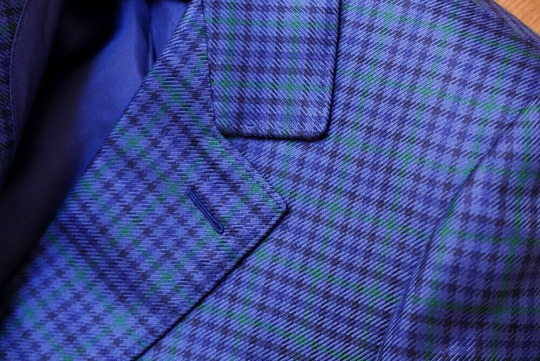
Groupe des Cinq lapel notch and milanaise-style detailed buttonhole.


The extra “secret” pocket in the lining that the Groupe des Cinq tailors made a fetish.
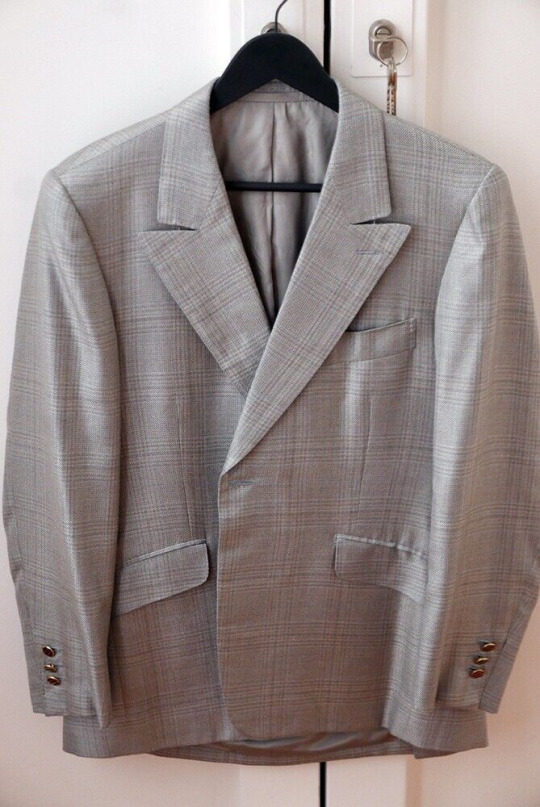
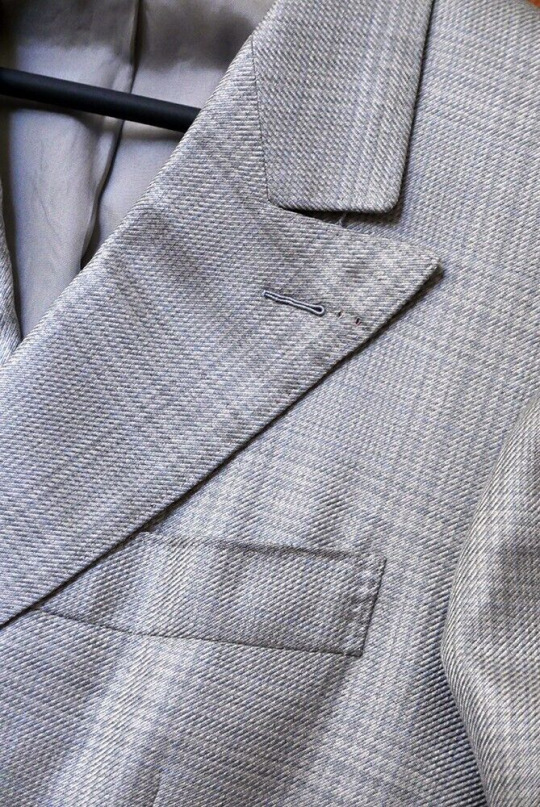
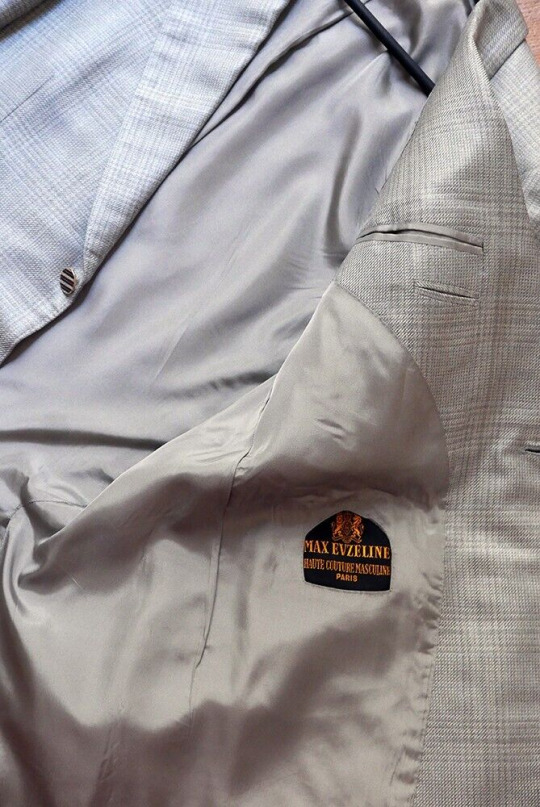

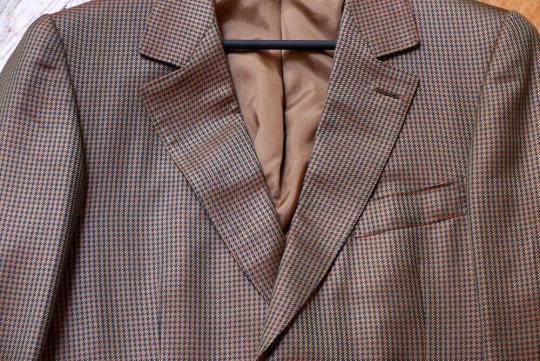
#Evzeline#Max Evzeline#Groupe des cinq#bespoke#Paris tailor#swansongsrjdm#grande mesure#menswear#elegant#steez#made in Paris#made in France#handmade in France
4 notes
·
View notes
Text
The Definitive Guide to the Best-Quality Shirt Brands

In the realm of men's fashion, few garments hold as much importance and versatility as the best-quality shirt brands. Whether for a formal occasion, a casual outing, or everyday wear, a well-crafted shirt can make all the difference in one's appearance and confidence. With countless brands vying for attention in the market, discerning consumers seek out the best-quality shirt brands that offer superior craftsmanship, premium materials, and timeless designs. In this comprehensive guide, we delve into the top shirt brands revered for their impeccable quality, enduring style, and commitment to excellence.
Best-Quality Shirt Brands: A Legacy of Timeless Elegance
Established in 1818, Brooks Brothers holds the distinction of being one of the oldest and most esteemed shirt brands in the world. With a rich heritage rooted in classic American style, Brooks Brothers has earned a reputation for producing shirts of exceptional quality and sophistication. Renowned for their attention to detail, Brooks Brothers shirts are crafted from premium fabrics such as Egyptian cotton and Supima cotton, ensuring unparalleled comfort and durability. From crisp dress shirts to casual button-downs, each garment bears the hallmark of Brooks Brothers' timeless elegance and craftsmanship.
Thomas Pink: British Heritage and Refinement
For aficionados of British sartorial tradition, Thomas Pink represents the epitome of refinement and luxury. Founded in London in 1984, Thomas Pink quickly garnered acclaim for its impeccably tailored shirts crafted from the finest cotton fabrics. With a focus on meticulous craftsmanship and attention to detail, Thomas Pink shirts are synonymous with understated elegance and sophistication. From classic dress shirts with double cuffs to casual Oxford button-downs, each garment reflects Thomas Pink's unwavering commitment to quality and style.
Eton: Swedish Excellence in Shirtmaking
Since its founding in Sweden in 1928, Eton has established itself as a leading purveyor of premium dress shirts beloved by discerning gentlemen worldwide. Renowned for their impeccable fit and luxurious fabrics, Eton shirts are crafted with the utmost precision and attention to detail. Utilising the finest cotton fabrics, including Egyptian cotton and Sea Island cotton, Eton ensures that each shirt exudes a sense of refinement and sophistication. With a diverse range of styles and patterns, from classic solids to bold prints, Eton offers something to suit every discerning taste.
Charvet: A Legacy of Parisian Elegance
As the oldest shirtmaker in the world, Charvet boasts a storied heritage dating back to 1838 and a reputation for unparalleled craftsmanship and luxury. best-quality shirt brands Nestled on Place Vendôme in Paris, Charvet has long been revered by connoisseurs of fine menswear for its exquisite fabrics, impeccable tailoring, and meticulous attention to detail. Each Charvet shirt is meticulously crafted by skilled artisans using the finest materials, resulting in garments of unparalleled quality and refinement. From classic white dress shirts to vibrant silk creations, Charvet epitomises the epitome of Parisian elegance and sophistication.
Turnbull & Asser: British Craftsmanship at Its Finest
Founded in London in 1885, Turnbull & Asser has earned a sterling reputation for its exquisite shirts crafted with the utmost care and attention to detail. Renowned for their traditional English style and impeccable fit, Turnbull & Asser shirts are favoured by discerning gentlemen and celebrities alike. Each shirt is expertly tailored from the finest cotton fabrics, with meticulous detailing such as hand-sewn buttons and collars. With a commitment to quality that spans over a century, Turnbull & Asser continues to epitomise British craftsmanship and refinement.
Ralph Lauren Purple Label: Luxury Redefined
Part of the Ralph Lauren luxury line, Purple Label represents the pinnacle of sophistication and refinement in menswear. Crafted in Italy with the utmost care and attention to detail, Purple Label shirts exude timeless elegance and luxury. Made from the finest materials, including Egyptian cotton and silk, each shirt is impeccably tailored to ensure a perfect fit and unparalleled comfort. Whether for a formal event or a casual outing, Ralph Lauren Purple Label shirts embody the epitome of understated luxury and style.
Brioni: Italian Excellence in Menswear
Founded in Rome in 1945, Brioni has long been synonymous with Italian elegance and craftsmanship. Renowned for their luxurious fabrics and impeccable tailoring, Brioni shirts are favoured by discerning gentlemen for their exceptional quality and style. Each shirt is meticulously crafted by skilled artisans using the finest materials, resulting in garments of unparalleled sophistication and refinement. With a commitment to excellence that has spanned over seven decades, Brioni continues to set the standard for luxury menswear worldwide.
Loro Piana: The Pinnacle of Luxury
Known for its premium fabrics and luxurious cashmere, Loro Piana also offers a range of high-quality shirts crafted from fine cottons and silks. Renowned for their impeccable fit and timeless style, Loro Piana shirts are favoured by discerning gentlemen for their exceptional quality and craftsmanship. Each shirt is expertly tailored to ensure a perfect fit and unparalleled comfort, making it the ideal choice for the modern gentleman. With a commitment to quality that has spanned over six generations, Loro Piana continues to redefine the standards of luxury menswear.
Conclusion
In the world of men's fashion, quality is paramount, and the shirt brands featured in this guide epitomise the highest standards of craftsmanship, luxury, and style. From the timeless elegance of Brooks Brothers to the refined sophistication of Charvet, these brands offer a diverse array of options to suit every discerning taste and occasion. Whether you prefer classic dress shirts or casual button-downs, investing in shirts from these esteemed brands ensures unparalleled quality, comfort, and style that will stand the test of time.
0 notes
Photo

Enjoying another Italian morning with its spontaneous elegance, with its seductive atmosphere and unique way to represent represents the art of "sprezzatura"- or could we say “studied carelessness” ///☕️🗞🇮🇹 #espressotime #inspiration #007 #espressobadge #espressoneverdies #sartorialmadeinitaly #meetsantillo #warsaw #santillo1970 #paris #london #craftmanship #luxury #shirtmakers #mastershirtmakers #exclusive #experience #bespokesuits #bespokeshirts #tradition #sprezzatura #neapolitantailoring #story #timelesselegance #connoisseurs #menstyle #showroom #Milan #handmadeinitaly (presso Via Malpighi) https://www.instagram.com/p/Cd5Ep88MdEM/?igshid=NGJjMDIxMWI=
#espressotime#inspiration#007#espressobadge#espressoneverdies#sartorialmadeinitaly#meetsantillo#warsaw#santillo1970#paris#london#craftmanship#luxury#shirtmakers#mastershirtmakers#exclusive#experience#bespokesuits#bespokeshirts#tradition#sprezzatura#neapolitantailoring#story#timelesselegance#connoisseurs#menstyle#showroom#milan#handmadeinitaly
12 notes
·
View notes
Photo

What about open collars, like this one by @daniellevychemisier do you wear them? Like them? Que pensez-vous des cols ouverts comme celui-ci de chez @daniellevychemisier vous en portez ? #menswear #shirt #bespoke #styleforum #daniellevychemisier #paris #shirtmaking #sartorial #sprezzatura #fashionblogger #elegance #luxury #sartoria #pitti #dandy #gq #gentleman #therake #rakish #cutawaycollar #sartorialworld #style #gentleman #parisiangentleman #mensweardaily #ootd #outfitoftheday #menswear https://www.instagram.com/p/B_E6chOpa29/?igshid=1k3h0s1y0hq7q
#menswear#shirt#bespoke#styleforum#daniellevychemisier#paris#shirtmaking#sartorial#sprezzatura#fashionblogger#elegance#luxury#sartoria#pitti#dandy#gq#gentleman#therake#rakish#cutawaycollar#sartorialworld#style#parisiangentleman#mensweardaily#ootd#outfitoftheday
10 notes
·
View notes
Photo

#Repost from @sartoria.girani (@repost_media_app) camicie fatte a mano su misura * * * #shirt #shirts #shirtmaker #handemade #bespokeshirts #tailor #tailoring #tailored #manstyle #manfashion # #menswear #napoli #london #paris #man #bespoketailoring #bespokeservices #style #class #classic #neapolitan https://www.instagram.com/p/BtiHLkVljJP/?utm_source=ig_tumblr_share&igshid=1uyzq6zb4re4c
#repost#shirt#shirts#shirtmaker#handemade#bespokeshirts#tailor#tailoring#tailored#manstyle#manfashion#menswear#napoli#london#paris#man#bespoketailoring#bespokeservices#style#class#classic#neapolitan
1 note
·
View note
Photo

Cashmere & silk scarves for my clients. #daniellevychemisier #bespokeshirt #cachmereandsilk #scarf #frenchelegance #parischic #luxuryscarf #shirtmaker #menswear #accessories #paris (à Daniel Lévy)
#parischic#frenchelegance#cachmereandsilk#daniellevychemisier#scarf#bespokeshirt#menswear#luxuryscarf#accessories#paris#shirtmaker
9 notes
·
View notes
Photo

Shirt making is our passion ❤️ @felixco_paris sources fabrics from the finest European manufacturers. 👔 you create your own shirt ⭐️each #felixcoparis bespoke shirt is carefully patterned, cut ✂️ and made 🖐 for each and every customer guaranteeing maximum comfort, fit and exclusivity • • #exclusivity #handmade #shirtmaking #tailoring #paris #madeineurope https://www.instagram.com/p/B0D-7SRIk5M/?igshid=v626hcgz88x1
0 notes
Photo

JEAN DUJARDIN, ICON OF IMPERMANENCE
by Réginald-Jérôme de Mans
There’s a fantastic new podcast Kill James Bond! providing a critical eye on the tired old cliché and media it inspired, from the Ennio Morricone-scored, Neil Connery-starring Operation Kid Brother to apparent #wifeguy Michel Hazanavicius’ revisionist French takes on the Bond also-ran OSS 117. Something clicked hearing the hosts discuss the joy the hero of the latter, Jean Dujardin’s entitled, thoughtless Hubert Bonisseur de la Bath, takes in simple moments and simple experiences. Joys typically filled with double entendres, like having his biscuit buttered or getting oiled up, as well as those that provided novel thrills for a 1950s character, such as taking an airplane… or, for a dandy, getting a chance to wear his new alpaca tuxedo.
Anyone reading this has probably secretly had similar moments, moments that you can’t share with a partner, of finding the perfect occasion, the perfect excuse for being able to display a fanciful indulgence. And, along with other fanciful details of old 1950s and 1960s spy movies like rear-projected driving scenes and blue-filtered day-for-nights, the makers of OSS 117: Cairo, Nest of Spies brought back the old tradition of having the hero’s suits made by a reputable tailor. Sean Connery and Patrick McGoohan had Savile Row tailor Anthony Sinclair, Cary Grant had a slew of Internet bores attempting to decipher a maker’s label in North by Northwest, and Dujardin’s spy had Jo Kergoat, renowned Paris tailor and protégé of none other than André Bardot, a founding member of the Groupe des Cinq of French custom tailors, the circle of prestigious 1950s tailors who shaped what French tailoring is today.
What is today? As tailored by Kergoat (who made 47 suits for the movie), Dujardin is a perfect French parody of Sean Connery, immaculately dressed in elegant detail – far better, for instance, than Daniel Craig ever has been as James Bond. Dujardin has reprised the role twice, once in 2009’s OSS 117: Lost in Rio, and now in OSS 117: Red Alert in Black Africa, which is slated to come out around the same time as the oft-delayed Bond film No Time to Die. In the meantime, during the long uncertainty of the pandemic, Jo Kergoat, who has previously raved that “everything’s going to hell and soon there won’t be a single real tailor in Paris," has helped fulfill his own prophecy and hung up his shears, at 91.
Hazanavicius and Dujardin have worked on other projects together, including the prominently Oscar-ed The Artist. Another period piece, it also featured the unusual attention to detail of French bespoke crafted clothing for Dujardin, this time from the custom tailor and shirtmaker at Lanvin, the oldest continuously existing French fashion house. Such a step was coherent with Dujardin’s role, a silent film star confronted with the new age of Hollywood talkies, in an age where studio systems practically required stars to maintain the same care in their off-camera appearance as in their highly orchestrated films. Not only was Lanvin one of Paris’ oldest couture houses, but with its men’s custom business founded in 1926 (in magnificent Art Deco premises decorated by Armand-Albert Rateau), it was one of the old guard of established French tailors, mostly forgotten names like Cristiani, Larsen, Knize and Creed (yes, the overhyped perfumers of today were once custom tailors to none other than the Shah of Iran, among others). An old guard against whom Bardot’s Groupe des Cinq had rebelled around the time that the action in the first OSS 117 movie takes place, because those five tailors (Socrate, Waltener, Camps, Bardot and di Nota) had wanted to show more progressive designs, back when prestigious custom tailors could set fashion because they dressed men of fashion, rather than being the isolated, crumbling redoubts they are today. And Lanvin itself lost its own such redoubt, after just under a century as one of the best, tailor and shirtmaker in the world, in the last year after the actual people responsible for such craft fled to the relative safety of Francesco Smalto… a tailoring house founded, ironically, by one of the alumni of the Groupe des Cinq.
It cannot be too coincidental that those two absurdly well-dressed, well-tailored roles make Dujardin confront periods of uncertain transition: his silent matinee idol facing the advent of films with sound and a whole new style of acting, and OSS 117, he who acts out all of the things 007 elides, like the need to carefully remove his custom suit jacket, shoes and cufflinks before jumping into bed with the femme fatale du jour, faced with the disintegration of colonial empires, of the illusion of France as a great power. In a way, Hubert Bonisseur de la Bath is Eurocentrism himself, forced to encounter other cultures as they shrug off imperialism (in the case of his first film, through the Suez crisis that destroyed British and French pretenses of power), as all of the absolutes that composed his worldview break down. So indeed the tailors and shirtmakers that made him. One can no longer take the joys of an alpaca tuxedo for granted, no matter how elegant one momentarily looked in it.
9 notes
·
View notes
Photo

“People forget how much movie stars taught us about dressing — and none more so than Gary Cooper. Every man wanted to look like Cooper, just as practically every gal on the Upper East Side of New York wanted to look like Babe Paley. I was in Paris a few years after Bacall married Bogart, and Rocky Cooper was a friend of mine. One afternoon I saw the four of them lunching together. With her immaculately fresh hair, and wearing something incredibly sleek, Bacall certainly stood out from all the French women. But it was Cooper who really stood out. Believe me, he was the best-looking son of a bitch who ever lived. He had the greatest sense of style... He used to go on these shopping expeditions in Rome and Paris. He’d buy cottons by the yard in Mexico and then send them to a shirtmaker in Italy. He had tailors all over the world...” — Bill Blass
3 notes
·
View notes
Text
Paris Stories by Mavis Gallant

". . . . When I was your age, about, my mother was dying of . . . I wasn't told. She took a ring from under her pillow and folded my hand on it. She said that I could always sell it if I had to, and no one need know. You see, in those days women had nothing of their own. They were like brown paper parcels tied with string. They were handed like parcels from their fathers to their husbands. To make the parcel look attractive it was decked with curls and piano lessons, and rings and gold coins and banknotes and shares. After appraising all the decoration, the new owner would undo the knots." (Irina, p. 45)
***
". . . . I've discovered the limit of what you can feel about people. I've discovered something else," she said abruptly. "It is that sex and love have nothing in common. Only a coincidence, sometimes. You think the coincidence will go on and so you get married. I suppose that is what men are born knowing and women learn by accident." (The Moslem Wife, p. 104)
***
A woman can always get some practical use from a torn-up life, Gabriel decided. She likes mending and patching it, making sure the edges are stsraight. She spreads the last shred out and takes its measure: "What can I do with this remnant? How long does it need to last?" A man puts on is life ready-made. If it doesn't fit, he will try to exchange it for another. Only a fool of a man will try to adjust the sleeves or move the buttons; he doesn't know how. (Baum, Gabriel 1935-[ ], p. 183)
***
Barbara called her sister-in-law "the mouse." She had small brown eyes; was vegetarian; prayed every night of her life for Alec and for the parents who had not much loved her. "If they would just listen to me," she was in the habit of saying—about Alec and Barbara, for instance. She never complained about her compressed existence, which seemed to her the only competent one at times; at least it was quiet. When Alec told her that he was about to die, and wanted to emigrate, and had been provided with a house but with nothing to run it on, she immediately offered him half her capital. He accepted in the same flat way he had talked about death—out of his driving need, she supposed, or because he still held the old belief that women never need much. She knew she had made an impulsive gesture, perhaps a disastrous one, but she loved Alec and did not want to add to her own grief. She was assured that anything left at the end would be returned enriched and amplified by some sort of nimble investment, but as Alec and his family intended to live on the capital she did not see how this could be done.
Alec knew that his sister had been sacrificed. It was merely another of the lights going out. Detachment had overtaken him even before the journey south. Mind and body floated on any current that chose to bear them. (The Remission, pp. 199-200)
***
". . . upon the beached verge of the salt flood . . ."
She did not say this. Her lips did not move; but she had the ringing impression of a faultless echo, as if the words had come to her in her own voice. They were words out of the old days, when she could still read, and relate every sentence to the sentence it followed. A vision, clear as a mirror, of a narrowing shore, an encroaching sea, was all that was left. It was all that remained of her reading, the great warehouse of stored phrases, the plugged casks filled with liquid words—a narrowing shore, a moving sea: that was all. And yet how she had read! She had read in hotel rooms, sprawled on the bed—drugged, drowned—while on the other side of the dark window rain fell on foreign streets. She had read on buses and on trains and in the waiting rooms of doctors and dressmakers, waiting for Bonnie. She had read with her husband across from her at the table and beside her in bed. (She had been reading a book, in a café, alone, the first time he had ever spoken to her. He had never forgotten it.) She had read through her girlhood and even love hadn't replaced the reading: only at times. (August, p. 279)
***
By now, after a few days, she might have known them for years. She came into their lives dragging her existence like a wet raincoat, and no one made a move to keep her out. She called them by their Christian names and had heard Bonnie's troubles and hinted at plenty of her own. Bob referred to her as Moonface because she was all circles, round face, round brown eyes. The first impression of American crispness had collapsed. Her hair often looked as if mice had been at it. The shirtmaker dresses were held together with pins. Dipping hems had been stitched with thread the wrong color. She carried foolish straw baskets with artificial flowers wound around the handle, and seemed to have chosen her clothes with three aims in mind: they mustn't cost much, they must look as if anybody could wear them, and they must be suitable for a girl of sixteen. She did not belong in their lives or in the Paris summer. She belonged to an unknown cindery city full of used-car lots. She sat by Flor's bed, hunched forward, hands around her knees. "I know how you feel in a way," she said. "Sometimes I feel so depressed I honestly don't like going out on the street. I feel as if it's written all over me that something's wrong. I get the idea that the mob will turn on me and pull me apart because I'm unhappy and unhappiness is catching." She seemed genial and lively enough, saying this. She was fresh from a different world, where generalized misery was possibly taken for granted. Bob said that Moonface was stupid, and Flor, for want of any opinion, had agreed, but could Flor be superior? She would have given anything to be a victor, one of that trampling mob. (August, p. 296)
***
Doris was proud of her education—a bundle of notions she trundled before her like a pram containing twins. She could not have told you that the shortest distance between two points was a straight line, but she did know that "hostility" was the key word in human relations, and that a man with an abscessed tooth was only punishing himself. (August, pp. 297-98)
***
As an inventor of a great number of imaginary events Grippes knows that the reflection of reality is no more than just that; it is as flat and mute as a mirror. Better to sound plausible than merely in touch with facts. (In Plain Sight, p. 346)
3 notes
·
View notes
Text
BrickClub: 1.5.9 Madame Victurnien’s victory
I've been researching the role of poor women in the garment trade all this week, after a fit of grumpiness at how history-of-clothes-community persistently focuses on skilled artisans, couturiers and home-sewers, while excluding any mention at all of the masses of poverty-line workers who supported the garment industries. I’ll post a link as soon as my writeup was done.
So Fantine's landlord figures out she's going to wind up in sex work pretty much immediately - setting up the stakes for the next section of the narrative, I suppose. The narrative moves on to shirtmaking, a job it was extremely common to supplement with sex work, and a trade which we are told is related to the presence of the soldiers in the garrison. You can feel where this story is going.
I like Hugo's admiration for the skill of being in poverty successfully, and that he associates it with courage. In the previous chapter, he associated Fantine's job loss with an emotion of shame, and I wondered whether this was a self-belief Fantine was going to carry with her - a sort of "sex work is all I am worth because I am good for nothing". I love that they resist this narrative. Hiding indoors or wanting to hide in Paris, then trying to overcome it and go out head-up. Finding other jobs, and adapting. Even though most things that happen in this chapter are negative, the mood feels positive.
3 notes
·
View notes
Text
Before Arnys
Art Deco plates showing the very period exterior and interior of the tailor-shirtmaker Lorys, for sale on the internet (not by me). These were likely of the new shop on the Right Bank of Paris that Lorys moved into in the early 1930s. It had vacated a Left Bank shop on rue de Sevres that was taken over by the Grimbert brothers, who decided to give their new shop a similar name to its predecessor: Arnys. Lorys stayed around for a few decades more - there’s a 1953 ad listing “The Tailors of Quality” that lists it!

At https://www.ebay.com/itm/225607855296

At https://www.ebay.com/itm/225617473804

https://www.ebay.com/itm/163654993444
1 note
·
View note
Link
When Karl Lagerfeld died, in February, “fashion and culture lost a great inspiration,” Bernard Arnault, the C.E.O. and chairman of L.V.M.H., said. A handful of businesses in Paris also lost a major patron, a one-man stimulus package who for decades had primed their margins and their creativity. The Lagerfeld District: a quilted clutch of bonnes adresses along the Tuileries and the gardens of the Champs-Élysées, not far from the headquarters of Chanel, where he was the creative director. The collapse of the Lagerfeld economy wasn’t catastrophic—Colette, one of his favorite boutiques, had already closed, in 2017—but his absence continues to be felt on shop floors around the city’s central arrondissements. “Karl liked to say that he was eleven per cent of our business,” Danielle Cillien Sabatier, the director of Galignani, the bookshop on the Rue de Rivoli, said the other day. When a visitor asked if the figure was accurate, she didn’t correct it. “He was certainly our No. 1 client.”
Lagerfeld went into Galignani once or twice a week. In a replica of his office that he once exhibited, shopping bags from the store cover every surface. “Once, we changed colors, from dark blue to light blue, and Karl said, ‘Oh, it’s the blue of Lanvin,’ ” Sabatier recalled. “I said, ‘No, it’s the blue of my eyes.’ ” An author and publisher himself, Lagerfeld was a bibliophile of epic appetite. (Practically a bibliophage, he is said to have torn the pages out of thick paperbacks as he read them.) He bought French books, English books, books of poetry, signed books, first editions, monographs, everything he could find on the Wiener Werkstätte. “Our booksellers knew the themes of his fashion shows long before they happened,” Sabatier said. “Sometimes we were thinking, This is awkward, what is he preparing? He’d buy dozens of books on astronauts, and, months later, there’d be a rocket at the Grand Palais.”
“Karl Kaiser,” the French journalist Raphaëlle Bacqué’s biography of Lagerfeld, has been a recent best-seller at Galignani. Near the fine-arts desk, there is a little shrine to him: a framed portrait, a photograph he took of a model posing in front of the shop’s windows. He might have been a monster boss (“I have no human feelings,” he once claimed), but he was apparently a peach of a customer. “He was very nice to everyone,” Sabatier said, pointing out another framed photograph, of Lagerfeld’s blue-cream Birman cat, Choupette, her head poking out of a Galignani bag. Lagerfeld had shot it for a window display and then given it to Sabatier for her office. She and several of her colleagues attended his memorial service. “I think it was real luck to come across such an incredible personality, and to see him in such simple conditions,” she said.
A few doors down, at Hilditch & Key, shirtmakers since 1899, Philippe Zubrzycki, the store’s manager, lit up when Lagerfeld’s name was mentioned. Monsieur Lagerfeld, he said, ordered around a hundred and fifty made-to-measure garments a year: nightshirts, kimonos, the white button-downs with collars like neck braces that had been his signature look since he lost ninety-two pounds over the course of a year by drinking protein shakes and eating nothing after 8 p.m. “He also ordered sleeveless ones, for painting,” Zubrzycki said. A client of long standing, Lagerfeld had cycled through different looks. At one point, when he was spending time at a château in Brittany, he had a taste for billowing shirts made in taffeta. “Sometimes he’d put in an order for fifty pieces and, over the weeks, the order would grow,” Zubrzycki said, acknowledging that Lagerfeld’s patronage was “fairly consequential.” Lagerfeld sent sketches for his orders by fax or courier, but he was open to suggestions from Hilditch & Key’s salespeople and tailors. “He loved when we made propositions, and often he’d say, ‘Oui, bingo!’ ”
Lagerfeld’s florist was Lachaume, a hundred-and-seventy-five-year-old family business on the Rue du Faubourg Saint-Honoré, where Marcel Proust went each morning to purchase an orchid for his buttonhole. Caroline Cnocquaert and Stéphanie Primet, its sister proprietors, responded immediately to a reporter’s invitation to talk about Lagerfeld, writing, “With great pleasure, he was our dream client!” The first time Lagerfeld came into the shop, in 1971, he bought “a very beautiful big white rose” from their grandmother, Giuseppina. An hour later, the sisters recalled, Yves Saint Laurent showed up, asking their mother, Colette, for exactly the same flower. When iPhones came out, Lagerfeld gave one to each sister, so that he could send them texts and images (“That was his word, rather than saying ‘photos’ ”). He hated holidays, when his ateliers were closed, and would take advantage of the fact that Lachaume stayed open, sending messages or coming in to chat. Cnocquaert and Primet had been very sad when Lagerfeld died, but, they said, “let’s think of the future, that’s what Monsieur Lagerfeld did.” They’d have their memories, they said, of his incredible orders. “We created thousands of bouquets!” ♦
4 notes
·
View notes
Photo

Italian elegance is as relaxed as possible and softly, natural but bold, refined but spontaneous. A duality that perfectly represents the Italian art of "sprezzatura"- or should i say “studied carelessness” #espressotime #bespoke #bespokeservice #meetsantillo #timelesselegance #sartorialmadeinitaly #meetsantillo #warsaw #santillo1970 #paris #london #craftmanship #luxury #shirtmakers #mastershirtmakers #exclusive #experience #bespokesuits #bespokeshirts #tradition #sprezzatura #neapolitantailoring #story #stylish #connoisseur #classicmenstyle #Milan #handmadeinitaly (presso Milan, Italy) https://www.instagram.com/p/CaEhh4bsNWb/?utm_medium=tumblr
#espressotime#bespoke#bespokeservice#meetsantillo#timelesselegance#sartorialmadeinitaly#warsaw#santillo1970#paris#london#craftmanship#luxury#shirtmakers#mastershirtmakers#exclusive#experience#bespokesuits#bespokeshirts#tradition#sprezzatura#neapolitantailoring#story#stylish#connoisseur#classicmenstyle#milan#handmadeinitaly
21 notes
·
View notes